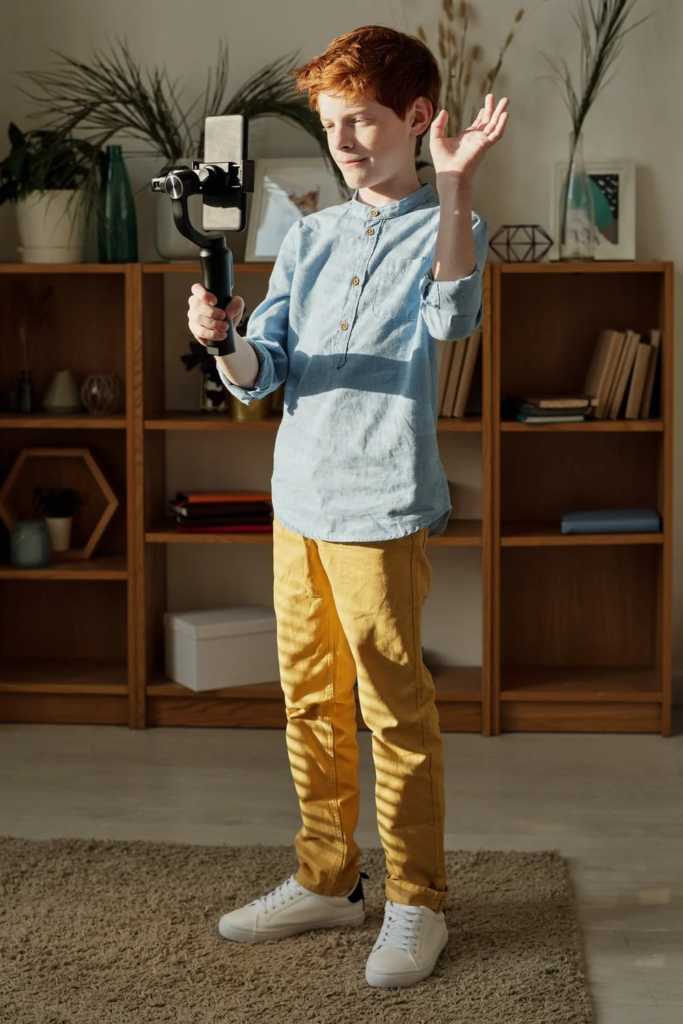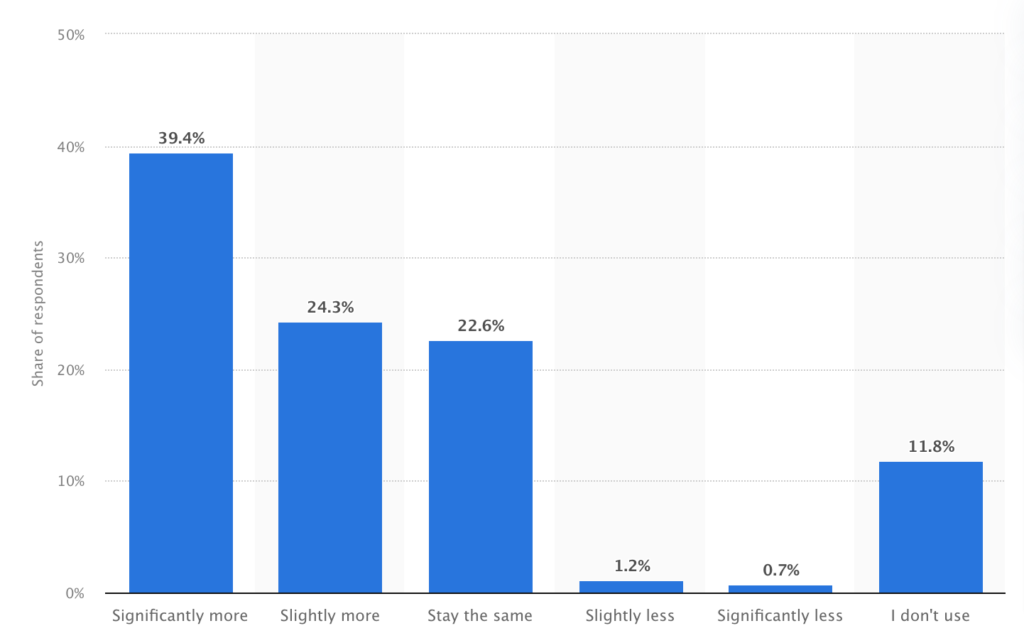Back at school, do you remember teachers asking what you want to become when you grow up?
A portion of my class opted to become doctors, while my best friend and I chose to stick with truck drivers! That was a time before YouTube became an integral part of our daily lives.
According to an article published in theSun.co.uk, in 2017, about 34 percent of the kids opted to become YouTubers when asked about their career choice.
About 16 percent wanted to become singers, while 15 percent like to become actors. Less than 7 percent said they like to become lawyers!
According to recent statistics, people watch more than 1 billion hours of YouTube content every day.
YouTube has become a highly influencing social media platform that uploads almost 500 hours of video every minute.
It provides a decent source of income for content creators and makes them a celebrity among the crowd. So basically, a YouTuber is everything that a kid could wish for!
However, Money is not the most influencing thing that attracts kids to YouTube.
Creativity comes first while choosing to become a YouTuber, followed by fame, self-expression, and Money.
Post Contents
- 1 Key Stats
- 1.1 1. More than 29% of Kids from The US Want to Become YouTube Vloggers.
- 1.2 2. About 53% of US Parents Say Their Kids Under 11 Watch YouTube Daily.
- 1.3 3. More than 52% of Kids Aged 6-17 Wanted to Become YouTubers, Vloggers, or Bloggers.
- 1.4 4. About 70% of Kids Are More Connected to YouTube Influencers than Traditional Celebrities.
- 2 What Are the Factors Affecting a Kid’s Decision to Become a YouTuber?
- 3 Conclusion
- 4 Sources
Key Stats
- More than 29% of kids from the US want to become YouTube Vlogger.
- About 53% of US parents say their kids under 11 watch YouTube daily.
- More than 52% of kids aged 6-17 wanted to become YouTubers, Vloggers, or Bloggers.
- About 70% of kids are more connected to YouTube Influencers than traditional Celebrities.
- 63% of YouTube views are from Smart Mobile Devices.
- 39.4% increase in YouTube usage during The Covid-19 Pandemic.
- More than 26 children in a classroom with one teacher.
1. More than 29% of Kids from The US Want to Become YouTube Vloggers.
All the results from the survey point out that kids from US and UK are interested in YouTube careers compared to other kids from the rest of the countries.
Based on a study statistics on thousands of kids from the US, 29 percent said they are interested in becoming a YouTube vlogger.
When the same survey was conducted in the UK, 30 percent of kids voted in favor of opting for YouTube as their future profession.
However, only 18 percent of Chinese kids choose YouTube over other job choices.

2. About 53% of US Parents Say Their Kids Under 11 Watch YouTube Daily.
Kids love watching videos, and for them, the easy way to get access to a wide range of video categories is YouTube.
According to the stats, about 80 percent of US parents confirm that their kid under 11 watches YouTube videos.
About 53 percent of parents say their kids under 11 watch YouTube daily.
Most parents are comfortable watching YouTube videos with their kids and feel that it can engage them and educate them to a great extent.

3. More than 52% of Kids Aged 6-17 Wanted to Become YouTubers, Vloggers, or Bloggers.
First Choice, a UK-based travel company, conducted a survey during 2017 among 1000 kids to find out their interests.
The kids who participated in the survey were aged between 6 and 17.
According to the statistical results, about 52.3 percent of the kids wanted to become YouTubers, Vloggers, or Bloggers.
4. About 70% of Kids Are More Connected to YouTube Influencers than Traditional Celebrities.
There are many factors why kids are more attracted to YouTubers compared to other media celebrities.
Most important of all is the frequency at which kids see these influencers.
On average, a YouTuber posts 1-2 videos per week, but a celebrity may be releasing a movie or music album once or twice in a whole year!
Children value stable mental connections, and they feel like they are more connected to YouTubers.
What Are the Factors Affecting a Kid’s Decision to Become a YouTuber?
5. 63% of YouTube Views Are from Smart Mobile Devices
Plenty of reasons paves the way for becoming a YouTuber in a child’s mind. The easy availability of smartphones, tablets, laptops, and personal computers has made YouTube usage part of our lives.
As of 2020, more than 2 billion people watch YouTube videos monthly.
Now that’s almost one-third of the internet users. According to statistics, 63 percent of YouTube views are from mobile devices during the second quarter of 2021.
Kids can easily watch YouTube videos from these smart devices from their homes.
Also, it has become easy to shoot a high-quality video from a smartphone rather than shooting using a professional digital camera.
Hence, kids can easily create content and post it with or without their parents’ help!
6. 39.4% Increase in YouTube Usage During the Covid-19 Pandemic
Like many other life-changing moments, Covid-19 has created a surge in social media platforms usage, especially YouTube.
A 2020 survey found that 64 percent of people will stick to YouTube as their way out of boredom from the Covid-19 lockdown and quarantine.
Kids, not getting any chance to attend their schools and outdoor games, depend upon smartphones and YouTube videos.
Many parents also admitted that they encouraged YouTube usage to avoid disturbance from their kids during the work-from-home situation.
YouTube displayed an 81 percent growth rate during 2020-2021. Plenty of YouTube channels creates content to aim at a teenage audience.
7. 26 Children in A Classroom with One Teacher.
Many surveys have shown that kids look for role models to copy the actions into their lives.
In older times, they relied upon their teachers, social leaders, movie stars, etc., and did things after getting motivated by their heroes’ activities.
However, according to stats, primary public classrooms are now populated with more than 26 children, making it difficult for them to interact and create a connection with their teachers personally.
Most of the new generation kids are spending their time watching videos of various contents rather than going out for a seminar session or a talk with their favorite teacher.
The hectic job shifts of the parents are also a factor for their kids to search for alternative inspirational leaders to look forward to.
Kids watching their parents working hard to meet the expenses feel that YouTube vlogging can resolve most real-life issues.
On the other hand, parents are not getting enough time to spend with their kids to talk about various careers and their good and bad sides.
Conclusion
All the factors mentioned affect children and influence them to choose YouTube as their profession.
However, opting for YouTube as a profession is not bad when considering futuristic job trends. For example, Annie LeBlanc started her YouTube when she was 6 years old.
With the support of her parents, she posted videos and achieved more than 3 million subscribers on her channel.
According to the stats, she can generate a minimum of $80,000 a month doing things she likes. So being a YouTuber is not a bad thing that parents should worry about.
If your kids wish to become one, support them and guide them instead of discouraging them.































